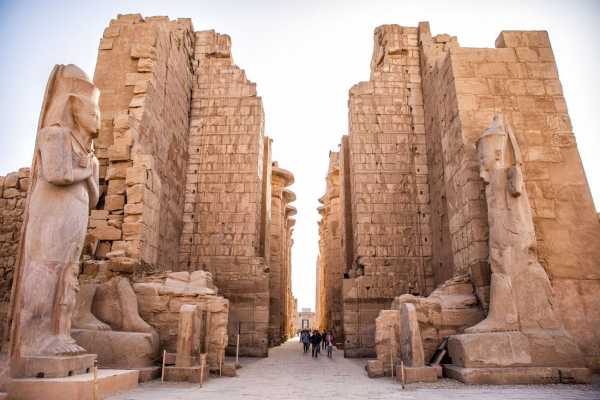Karnak Temple Karnak Temple is a vast temple complex located near Luxor, Egypt. It was built over a period of more than 1500 years, from the Middle Kingdom to the Graeco-Roman period. The complex is dedicated to the worship of Amun, the chief deity of the Theban Triad, a group of gods worshiped in the Theban region of ancient Egypt. Karnak is one of the largest temple complexes ever built, covering an area of more than 2 square kilometers. The temple complex consists of several temples, chapels, pylons, and other buildings, including the Great Temple of Amun, the most significant structure at Karnak. The temple complex also features several interconnected hypostyle halls, some of which contain massive columns over 20 meters high. The Great Temple of Amun is composed of several sections, each built by different pharaohs and rulers over the centuries. The complex includes the main sanctuary, the Precinct of Amun-Re, the Temple of Khons, and several other structures. The main sanctuary is where the statue of the god Amun was kept, and it was only accessible to the pharaoh and high priests. Today, Karnak is a UNESCO World Heritage site and is an important tourist attraction in Egypt, attracting millions of visitors each year. It is widely regarded as one of the most remarkable achievements in ancient Egyptian architecture and art, providing insights into the religious beliefs and practices of the ancient Egyptians.













